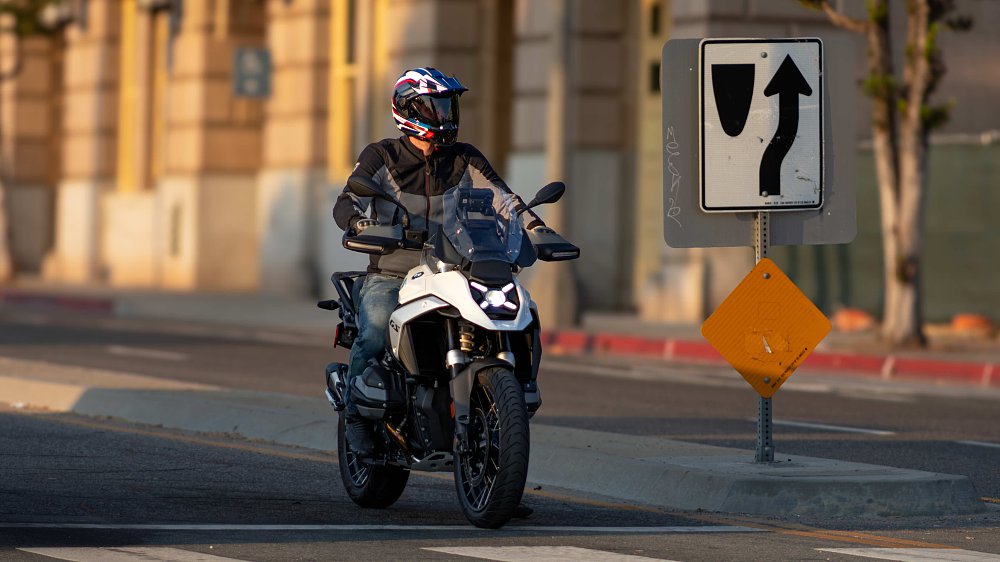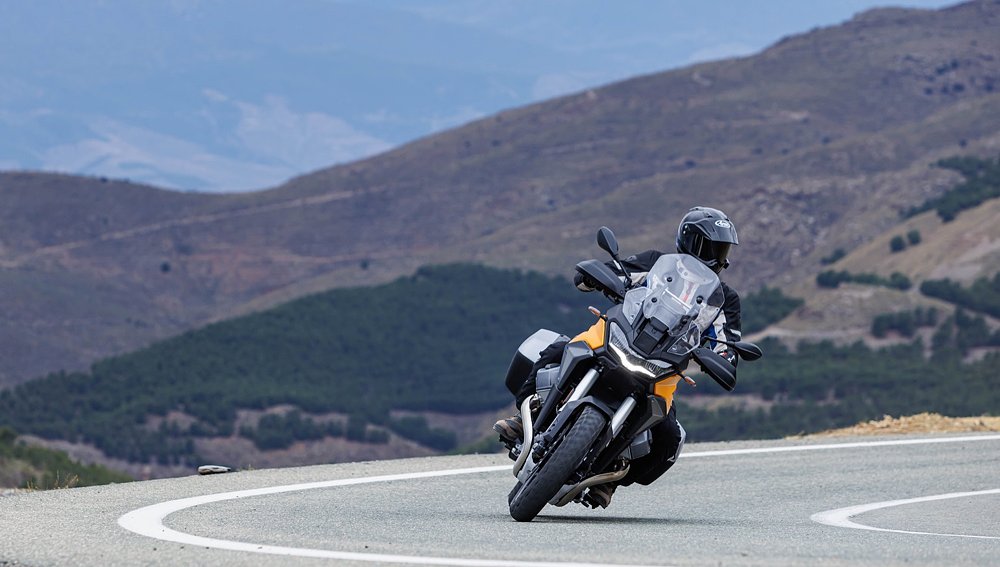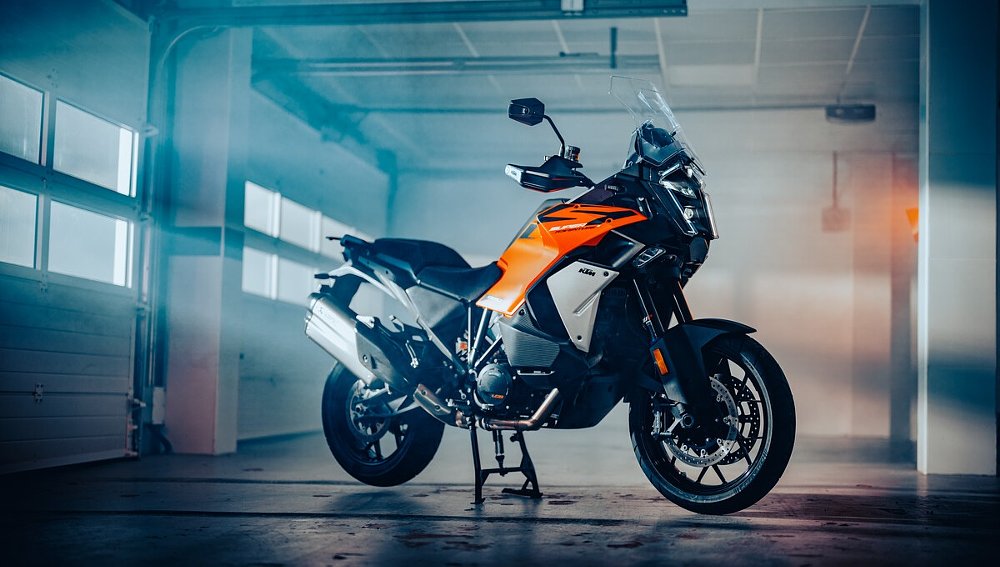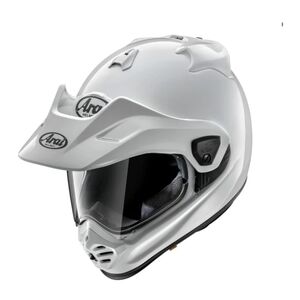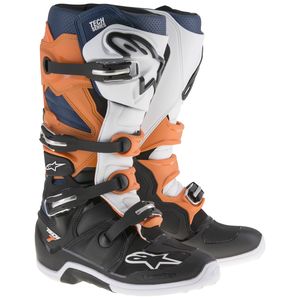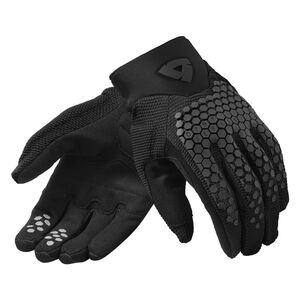Only a few months after I purchased my used 2014 BMW R 1200 GS Adventure, rumors began to swirl about a new 1300 platform to replace the updated 1250.
I was smitten with my first-year wasserboxer. How could a bike this big handle itself so well? In my mind, the 1200 and 1250 bikes with their eight-gallon tanks were at the absolute brink of sheer scale, a magic hat with a false bottom holding on by one stitch before rabbits began spilling out. To my delight, the GS 1300 was introduced as the slimmer, svelter, and even more sporting evolution of the category leader.
"The world is healing," I thought to myself. For the first time ever, the new GS was lighter than its predecessor! Maybe this would usher in a new trend of reversing ADV bike bloat! And then I saw a photo of the Adventure model to follow…
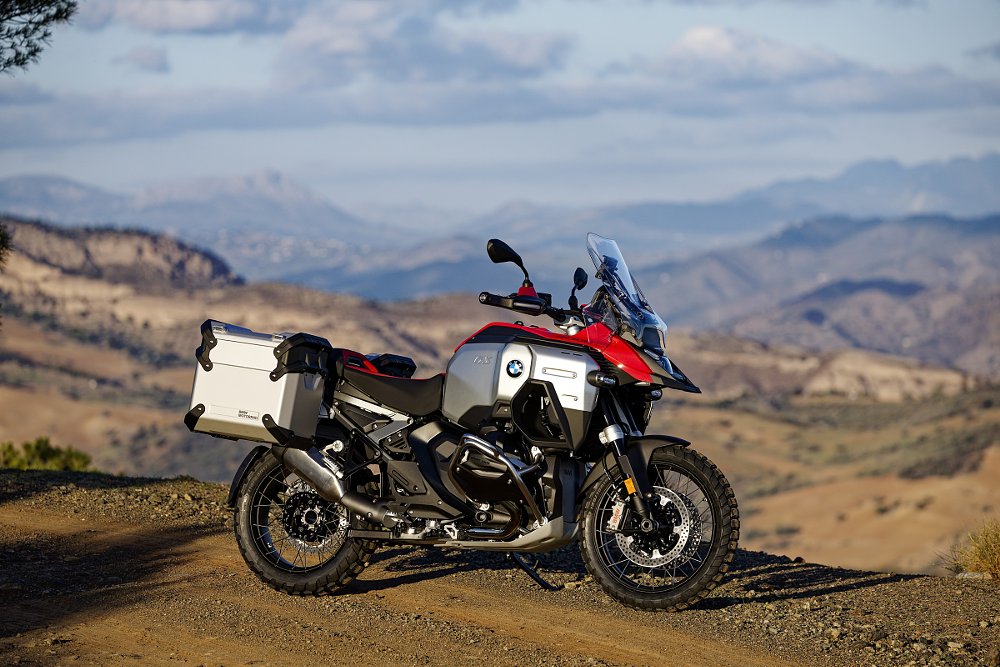
GS Adventure or GS Automatic
Not long after arriving in Málaga, Spain, for the introduction of the new R 1300 GS Adventure, I had a chance to walk around the Trophy edition of the new GSA. I let out a sigh of relief. The GS platform's looks have always been a bit divisive, but I'm happy to report that the brave (and not so little) toaster looks much better in person. Still, if you didn't like the look of the previous generation, this probably isn't going to win you over.
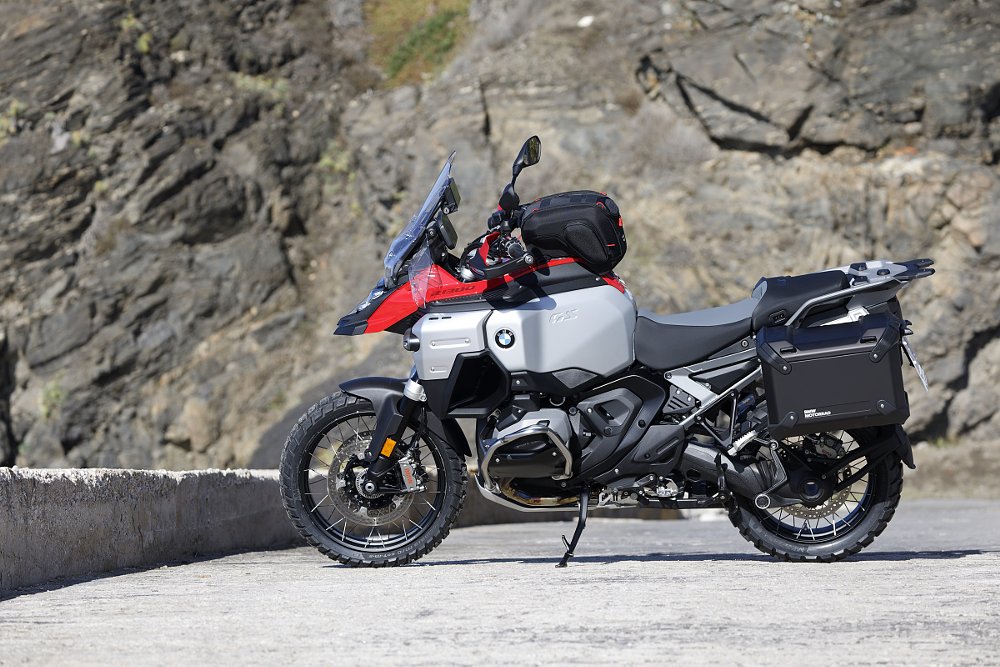
The Racing Red version of the bike parked inside of our hotel also made strong impressions with my fellow journalists, but largely because of something it lacked: a clutch lever. The new R 1300 GS Adventure will be the first bike in BMW's lineup to offer optional Automated Shift Assist (ASA), but the Bavarians assure us it will be available on the smaller GS starting in 2025. Unlike its DCT competitors, ASA uses the same transmission as the "normal" bike in combination with a computer-controlled hydraulic clutch and shift drum to "simplify your ride," as BMW puts it. Also unique to ASA is the presence of a shift lever, so at least something on the left side of your body has a job to do. Rest assured, swapping between manual and automatic is a quick press of the dedicated button.
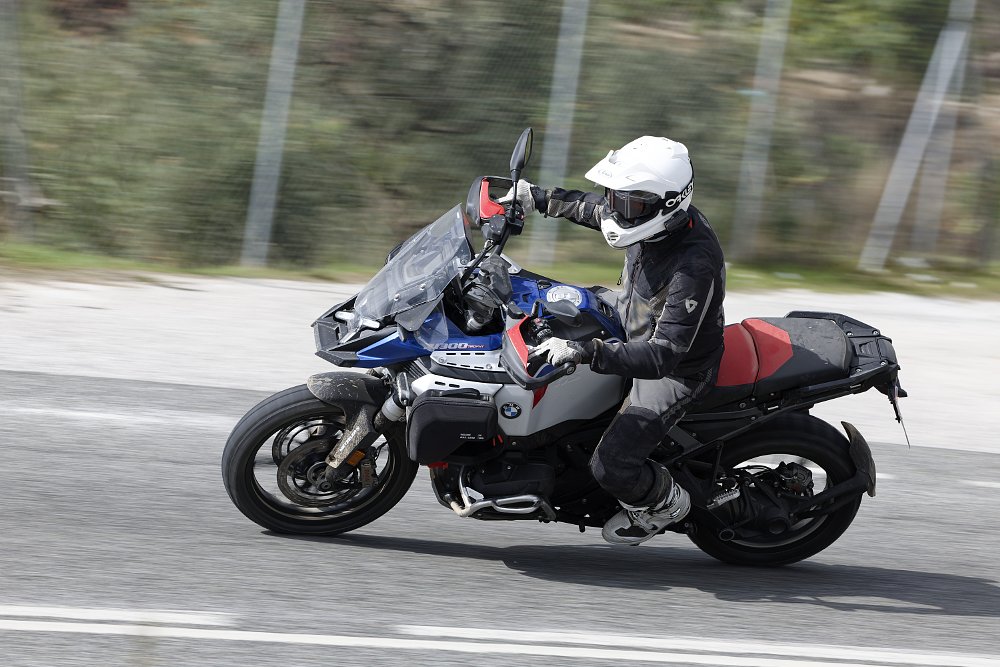
Riding the R 1300 GS Adventure: Tarmac
Our first day of riding was nearly 200 miles of mixed terrain, bouncing back and forth between narrow, technical country roads, well groomed dirt, and fast-flowing two-lane blacktop that the Spanish board of tourism should be proud of. I started off the morning getting acquainted with the standard-shift Trophy edition of the bike, equipped with the optional premium package. This includes the optional bi-directional quickshifter, electrically adjustable windshield, customizable ride modes, up-spec brakes, GPS cradle, and a few other cosmetic options.
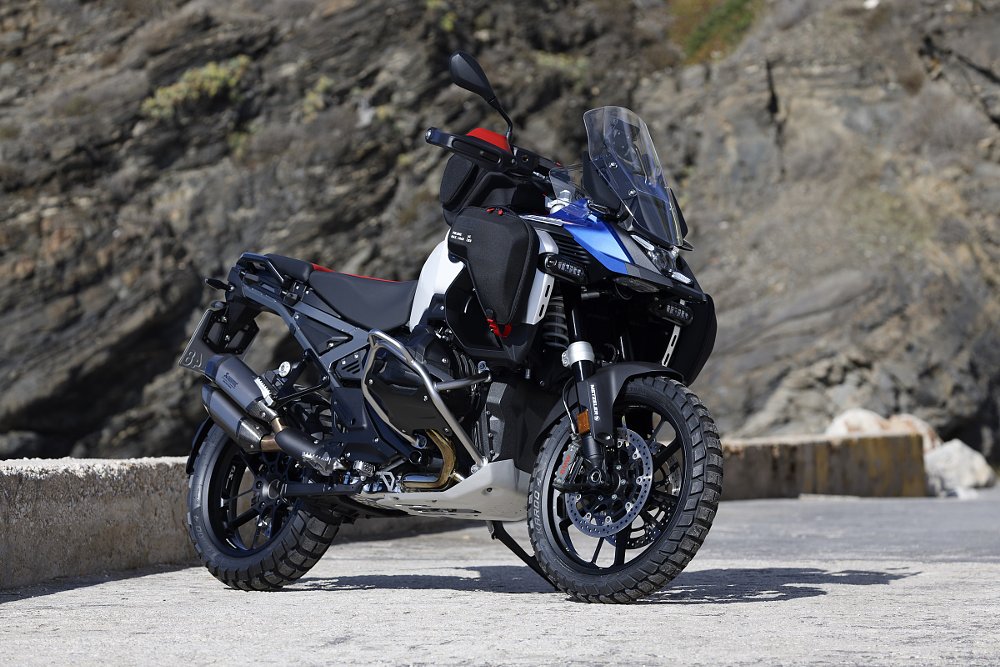
Normally, I'd be pretty hesitant to ride a model on a press launch with a $3,275 accessory package and consider it a true baseline, but you'd be hard-pressed to find a dealer in the country that will order either GS/A without this accessory package at the bare minimum. While the base price seems competitive at $22,745, my Trophy also was adorned with the forged enduro wheels, Akrapovič slip-on, and Metzler Karoo 4 off-road tires, bringing my as-equipped price to a staggering $31,225 MSRP. And that doesn't include the integrated tank bag, side bags, or panniers we tested throughout the day. Once you take into account the cost of that luggage, you're in for at least $1,000 more than a Ducati Multistrada V4 Rally. Talk about expensive company.
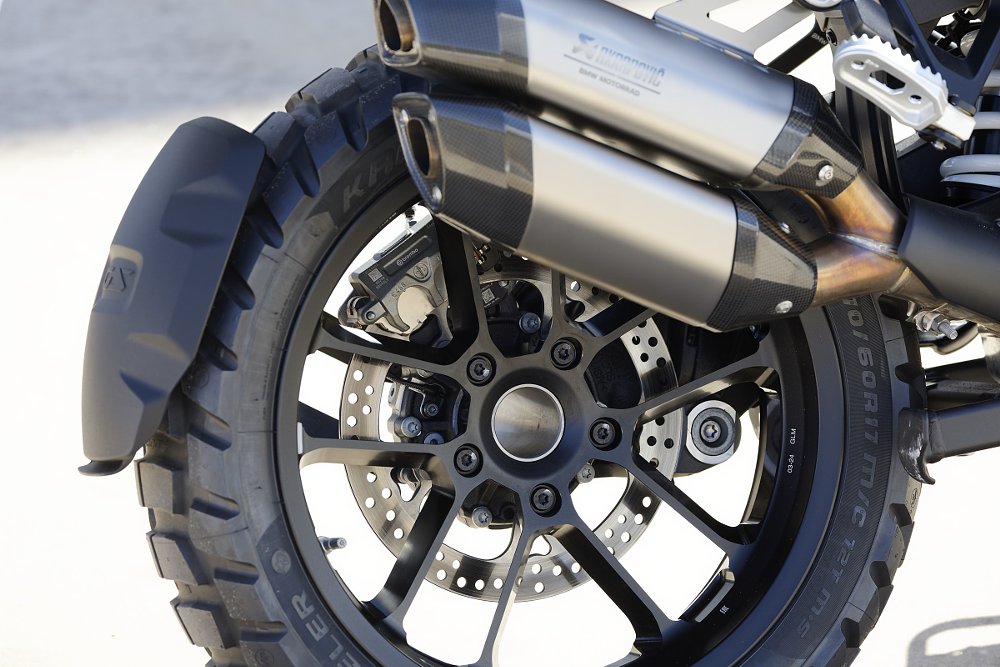
Window sticker done, we quickly worked our way out of the city through Málaga's morning rush hour with surprising efficiency. There's no way around it, this is an enormous motorcycle. But its 593-pound curb weight seems to melt away once you hit five miles per hour. The big Beemer's weight stays dormant at any sensible speed and it's not until you really start dragging the footpegs or getting hard on the brakes that you are reminded of the sheer mass you're commanding.
One of the most impressive parts of BMW's suspension is how invisible it becomes. Of the well over 100 motorcycles I've ridden to date, it's one of the few that my neurotic ass hasn't felt the crippling urge to change the clickers (virtual or physical). The Telelever front end handles unlike anything else on the two-wheel market, allowing the 600-pound monster to flick back and forth with downright naughty fluidity. Even when approaching the limits of what's fun (and safe), the anti-squat geometry does an incredible job of mitigating sudden weight transfer to the front end when you have to slow down in an emergency. This makes for phenomenal handling characteristics while riding two up or when you inevitably overpack for your trip, but I do find the trade off is front-end feel. The big GSA is a bike that's very easy to ride, considering its stature, but can take some time to inspire trust at the limit. I found this to be the case off-road especially, compared to a traditional fork-suspended bike, as I continually found there was more mechanical grip from the front end than what my gut was telling me.
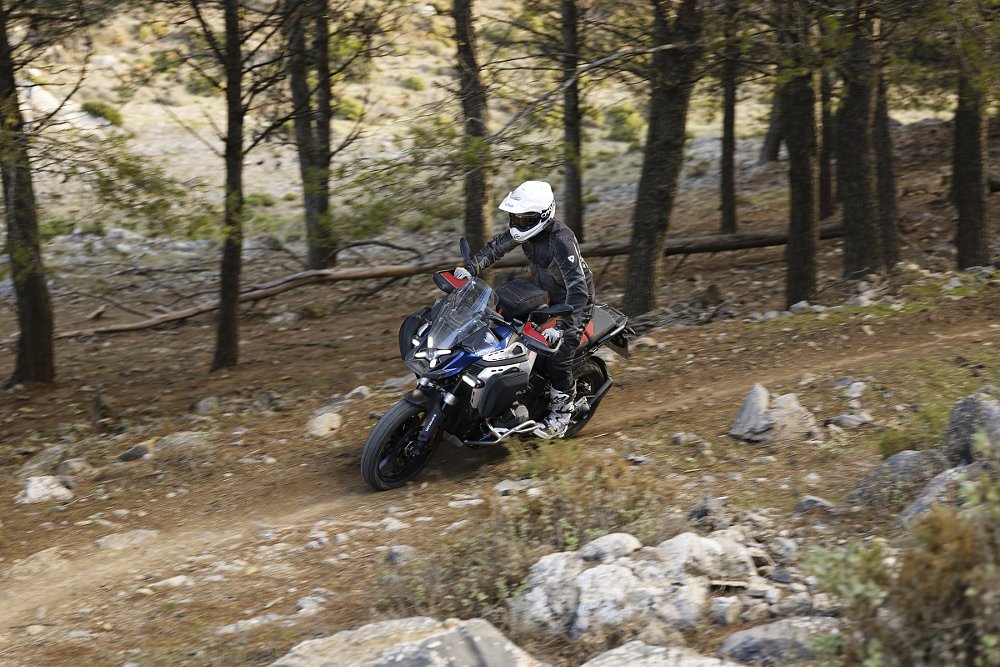
Riding the R 1300 GS Adventure: Dirt
My first few miles on gravel were a bit too uneventful, but thanks to the customizable ride modes I was able to modify the throttle response in Enduro Pro mode to spice things up. Once I swapped to a more aggressive setting, sliding the rear under power was more predictable, but I still found the traction control settings to be too intrusive upon initial loss of grip. In their more off-road-focused modes, the comparable Ducati and KTM adventure bikes seem to reel in a slide closer to the end of its limit, making it easy to predictably initiate (and hold) a long slide. Unfortunately, the GSA seems to take its most aggressive intervention at the first sign of wheel spin to try to keep your tires pointed in the same direction.
After some practice, I found that being more aggressive with the throttle delivery off-road helped overcome the initial intervention, but instead of adding to the fun it just felt like more work. Sure, I could just turn off TC entirely, but especially on a bike this size I prefer to have a safety net, particularly in the dirt. For most off-road mortals, rider aids on a near-600-pound bike are essential.
Despite the crudeness of the traction control on loose terrain, I found the off-road ABS to be fantastic. Just like on tarmac, the GSA disguises its weight very well, encouraging you to go faster, and on more than one occasion the off-road ABS helped get me out of a tight spot while still offering good traction and maneuverability, despite my over eagerness to get to the next switchback.
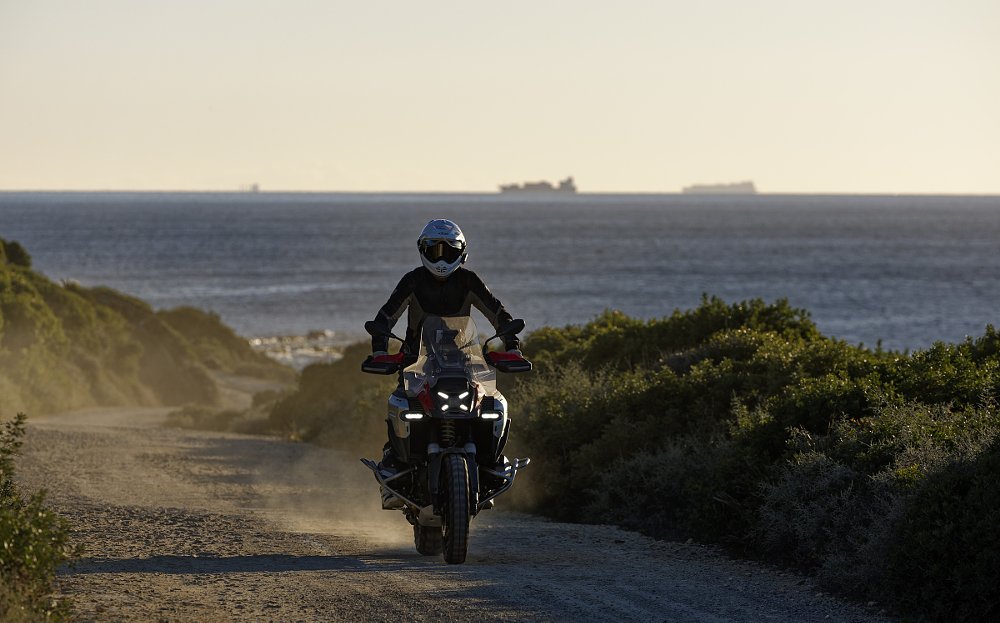
On road, the ergonomics and rider comfort are some of the best I've ever experienced, but I did find the standing ergonomics to be a tad awkward for long stints in the dirt. When dropping my heels off-road, my size 10.5 boots constantly rested against the passenger pegs, which pushed my heels out and away from the pegs. This could easily be remedied by removing the passenger accommodations, and to BMW's credit this would have been a lot worse if not for the very large and accommodating footpegs. While it's by no means a perfect cockpit for the off-road attack position, I have to remind myself that for most owners this bike will rarely be ridden off-road, and all things considered it's a pretty reasonable compromise. This bike has no business being as capable as it is in the dirt and it's a shame that so many won't see any.
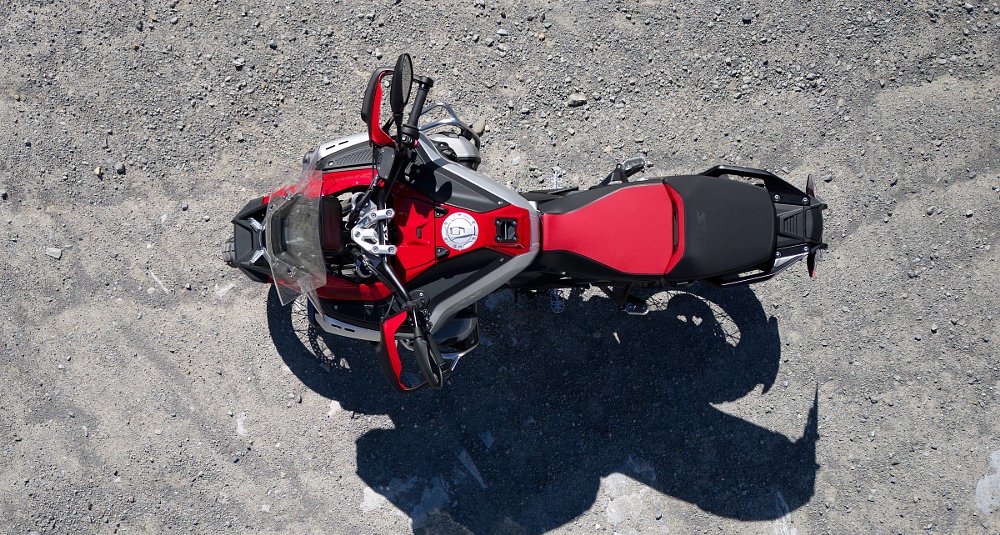
A tale of two transmissions
With about 100 miles (and more Iberian ham than you could fathom) under my belt, lunch provided the perfect mental reset, and more importantly an opportunity to swap bikes. While my Racing Red bike also came equipped with the same premium package a very important box was checked: Automated Shift Assist. I think it's a great move on BMW's part to offer ASA as a no-cost option for customers who choose the Premium Package and it will no doubt get more riders interested in the system.
On top of the Premium Package with ASA, my after-lunch ride was also equipped with the optional Adaptive Vehicle Height Control, bringing the MSRP to $27,395. Similar to the system pioneered by Harley-Davidson's Pan America, this suspension lowers the ride height by 1.2 inches or low speeds or when stationary, with the option of manually setting the ride height on the fly using the customizable button on the lefthand controls. I absolutely adore this feature on every adventure bike that uses it and the BMW was no exception. At five feet, 11 inches tall, with a 32-inch inseam, I have no problems with the standard 34.25-inch seat height, but around town the extra reassurance of AVHC was nice when combined with stiff motocross boots. If you want even more help with your inseam, BMW offers a "comfort" version of AVHC that functions exactly the same with a one-inch reduced standard height. Combine all of those options and you've got a seat height just over 32 inches with a center of gravity lower than any similar motorcycle.
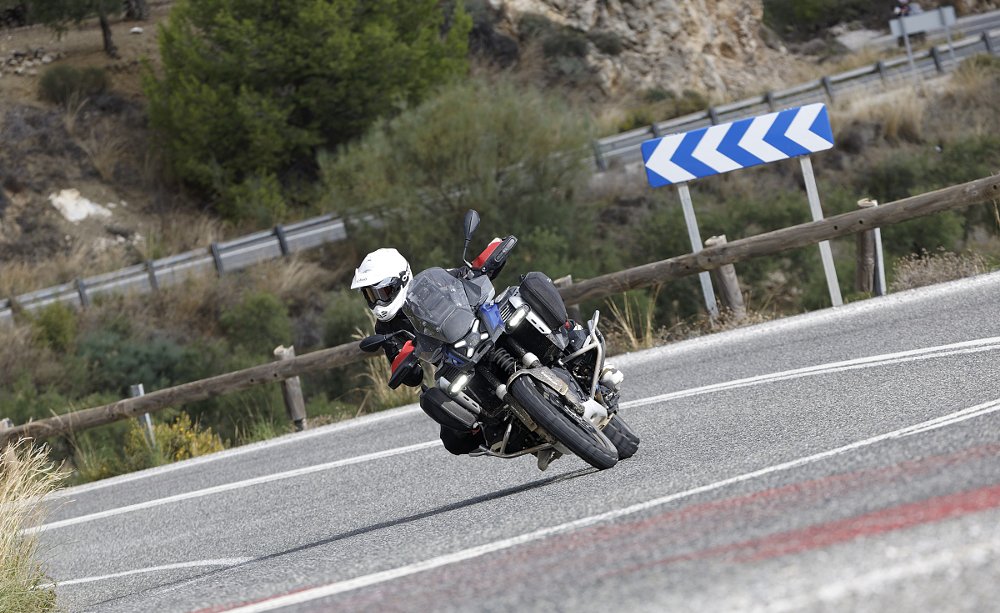
As fun as it was hustling the big Bavarian through the Spanish countryside, I was looking forward to a more relaxing pace after lunch. Thankfully, I wasn’t the only one with a food baby, and a quick rain shower drenched the roads so I took the opportunity to get to know the automated elephant in the room. The standard and ASA bikes share an identical transmission with excellent gear ratios for riding on- and off-road, but between the two I actually preferred the ASA bike. For touring at highway speeds or even spirited canyon roads, the ASA worked almost flawlessly. The shift points and character are directly tied to riding modes, with Dynamic Pro feeling the closest to how I would "normally" shift the bike. In 50 miles of backcountry roads, only once or twice did the bike select a gear higher than I wanted.
I initially scoffed at BMW's claim that automatic mode would reduce rider effort by "~10-15%" but in a touring context I think they're right on the money. My initial concerns that this type of rider aid would be more dangerous, causing riders to "fall asleep at the wheel," couldn't have been farther off. What I found, while jet-lagged and riding in an unfamiliar country on an unfamiliar bike, was that automatic shifting allowed me to focus so much more on what was important. Picking good lines. Looking through the corners, enjoying the incredible views. I can't believe I'm saying this, but ASA allowed me to have even more fun. Now before you run and grab your pitchforks let me give you a bit more insight on how the system works.
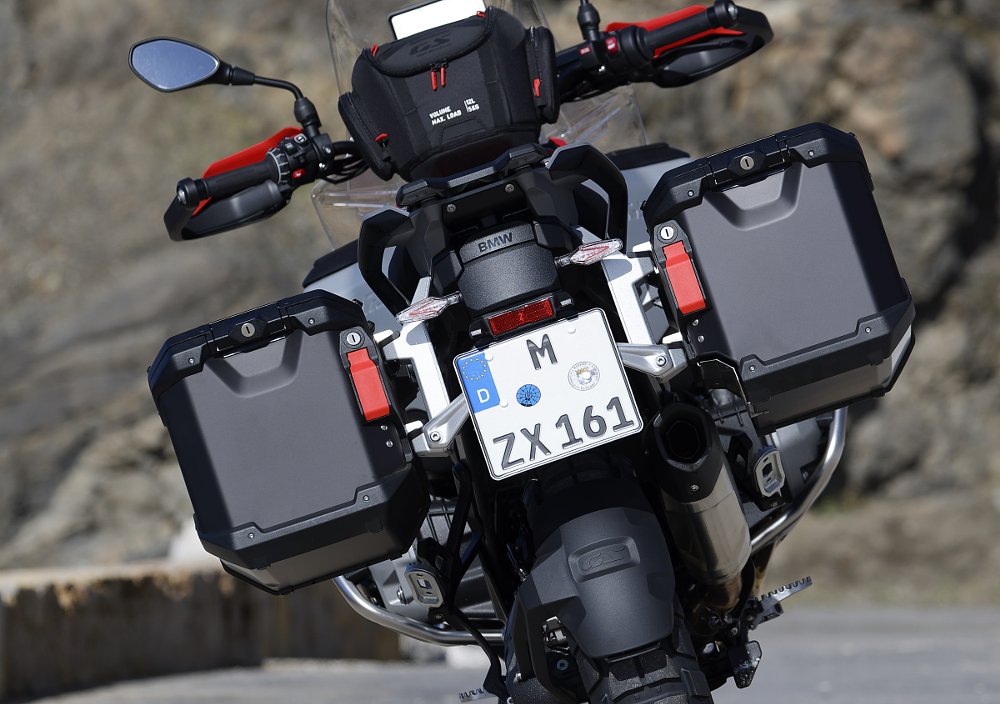
In manual mode, the rider selects the gear just like they would on a normal bike, but with just a few differences. Obviously, there is no clutch to feather from a stop (the bike takes care of this for you) and if you want to find neutral simply press down and hold for about two seconds. The only time the ASA will intervene in manual mode is if you're above second gear and come to a complete stop without downshifting on your own. Once stopped, the bike will automatically bring you down to first gear and then the reins are back in your hands.
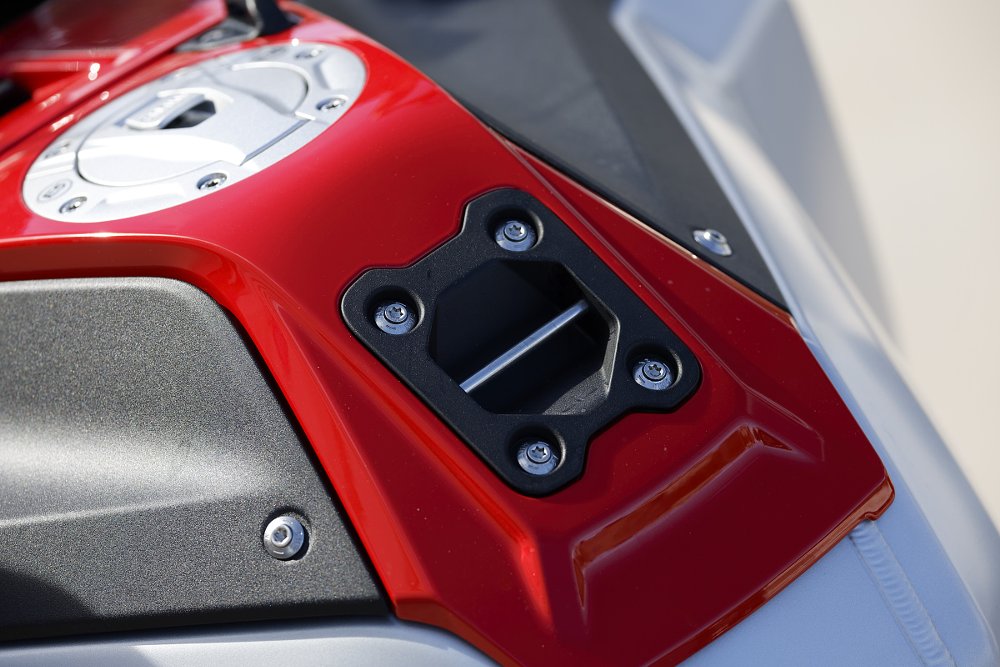
Riding in auto mode and want to downshift? Override the current gear selection by kicking down like you normally would. The bike will hold that gear for about 20 seconds before resuming control. Worried about stopping or taking off from a hill? The bike has Hill Hold and the computer does a fantastic job engaging the clutch. I even found with a few minutes of practice I could convince the computer to slip the clutch while I applied the rear brake for track stands and technical low-speed maneuvering like I might do in tough terrain. There is so much nuance with this system that it's hard to fit in just one article, so I implore you to try it out when these bikes hit dealers. It is shockingly good.
As great as the auto was on road, I didn't care for it off-road, at all. Even when adjusting the throttle response to Dynamic, it constantly hunts for gears too high to have a connected feel and leads to a loss of compression braking. I found it actually requires more effort and energy to ride any sort of descent in loose conditions, which kills the whole point of the system. Thankfully, the manual mode worked flawlessly on- and off-road. Riders doing more technical riding than gravel or flowy two-track might miss the clutch lever, but for what 99% of customers will actually be doing with the bike it's fine, if not better than the quickshifter-equipped standard bike.
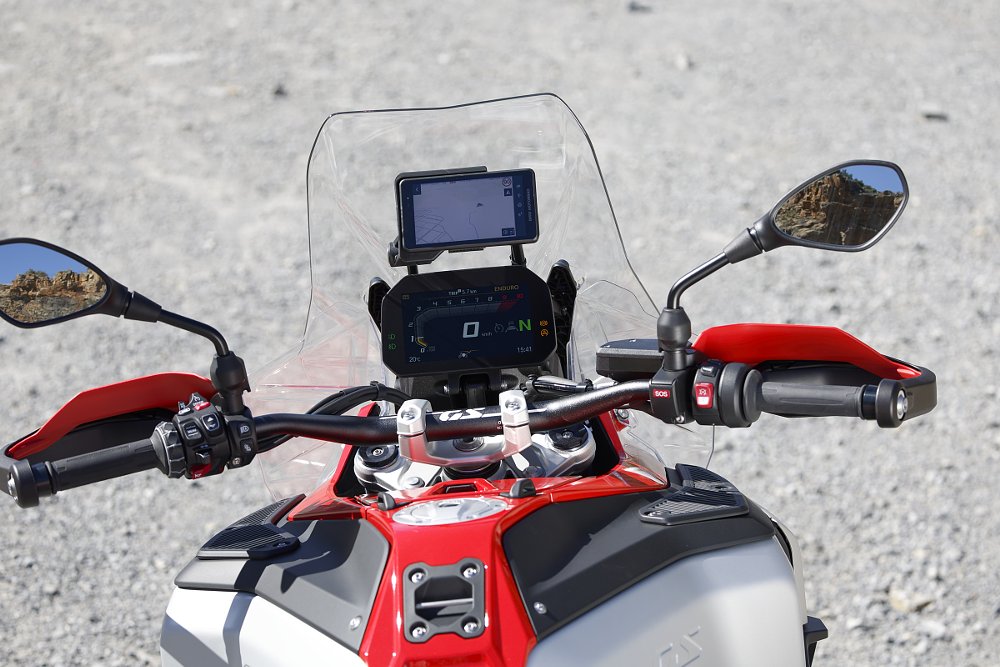
Highway manners
After a short dirt loop in the morning, our second day of riding was all about motorway miles and the GSA was more than up to the task. The motorways in Spain have a very short run up to merge and provided the perfect opportunity to stretch the BMW's legs. After 44 years, it should be no surprise that the big boxer in BMW's lineup retains all the charm that you love with a staggering level of refinement, and you'd be hard-pressed to find a more friendly version of 140 horsepower. With each iteration, the boxer loses a bit of its character, but the power delivery and iconic howl honor the legacy nonetheless.
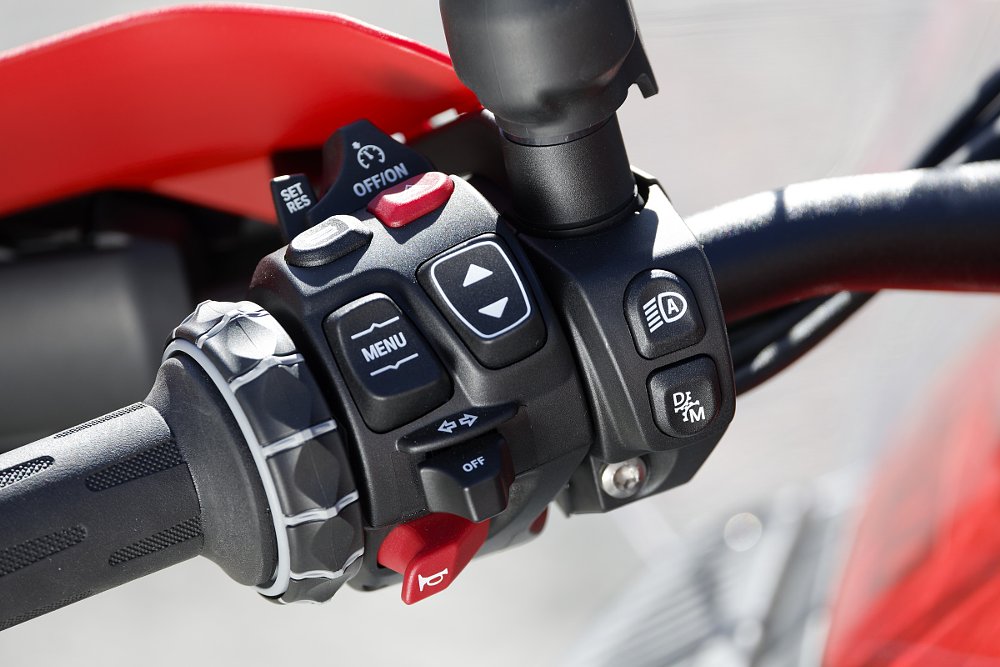
The electronic safety features were also robust but offered a less refined experience than I was expecting, compared to the suite on Ducati's Multistrada V4 Rally. The radar cruise was easy to engage but I found it wasn't always consistent in registering a single motorcycle in front of me. Also, if the motorway had a substantial curve and a slower vehicle was ahead in the right lane, it would cause the bike to slow down aggressively because the bike falsely assumed the slower vehicle was in our lane.
Blind-spot monitoring has quickly become one of my favorite "must be nice" features on bikes in the premium price bracket, but the small triangles in the mirrors were hard to see in most riding conditions and didn't add much more rider awareness than I'd normally practice by just checking my mirrors. I think I'd notice the shortcomings a bit less on a less refined bike, but every other part of the user experience on the GSA feels so dialed in that it can be hard not to notice.
When you start to tickle $30,000, expectations skyrocket. Customers expect more tech. More performance. More safety. More fun!
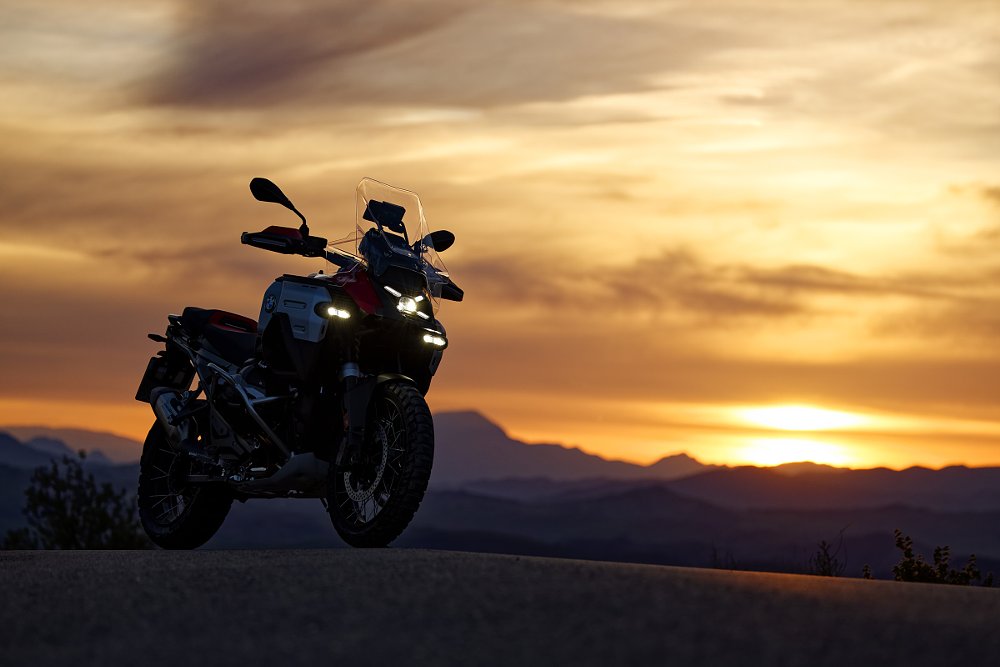
As I pulled into the hotel parking lot for the last time, I reflected on just how far the BMW's adventure bike has come in 44 years and realistically I have to wonder how much more whittling BMW can do before this platform just can't get any better. Until then, I have to begrudgingly accept that despite being heavier, taller, wider, and longer… each generation of GS Adventure has proven to be better than the last.
| 2025 BMW R 1300 GS Adventure | |
|---|---|
| Price (MSRP) | $22,745 base; $27,395 and $31,225 as tested |
| Engine | 1,300 cc, air and liquid-cooled, four-valve, opposed twin |
|
Transmission, final drive |
Six-speed, shaft |
| Claimed horsepower | 145 @ 7,750 rpm |
| Claimed torque | 110 foot-pounds @ 6,500 rpm |
| Frame | Steel, two-section, with bolt-on rear frame |
| Front suspension | BMW EVO Telelever, adjustable for preload and damping; 8.3 inches of travel |
| Rear suspension | BMW EVO Paralever, adjustable for preload and damping; 8.7 inches of travel |
| Front brake | Dual radial-mount four-piston calipers, 310 mm discs with ABS |
| Rear brake | Two-piston caliper, 285 mm disc with ABS |
| Rake, trail | 26.2 degrees, 4.7 inches |
| Wheelbase | 60.4 inches |
| Seat height | 34.3/35 inches |
| Fuel capacity | 7.9 gallons |
| Tires | 120/70R19 front, 170/60R17 rear |
| Claimed weight | 593 pounds |
| Available | Now |
| Warranty | 36 months |
| More info | bmwmotorcycles.com |

 Membership
Membership










